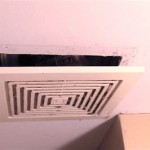The Essential Guide to Bathroom Sink Plungers
A clogged bathroom sink is a common household inconvenience. It can disrupt daily routines and, if left unattended, may lead to more significant plumbing problems. While chemical drain cleaners are often considered, a bathroom sink plunger represents a simple, effective, and environmentally conscious solution for clearing many sink blockages. This article aims to provide a comprehensive understanding of bathroom sink plungers, their types, proper usage, maintenance, and when to consider alternative solutions.
A bathroom sink plunger, distinct from a toilet plunger due to its smaller size and design, is specifically engineered to generate suction and pressure within the confined space of a sink drain. Its primary function is to dislodge debris obstructing the flow of water, restoring proper drainage. Understanding the mechanics and nuances of this tool can empower homeowners to address minor clogs quickly and avoid costly professional plumbing services.
Types of Bathroom Sink Plungers
Bathroom sink plungers are not a one-size-fits-all solution. Variations exist in design and material, each offering advantages depending on the nature and location of the clog. Identifying the appropriate type of plunger for a specific situation is crucial for effective clog removal.
Cup Plungers: This is the most common type of bathroom sink plunger. It features a simple rubber cup attached to a handle. The cup is designed to create a seal around the drain opening. When pushed and pulled, the cup plunger generates pressure and suction that loosens and dislodges obstructions. Cup plungers are generally effective for simple clogs caused by hair, soap scum, and minor debris accumulation.
Flange Plungers: Also known as toilet plungers, these plungers are often mistakenly used for sinks. They feature a soft rubber flap, or flange, that folds out from the cup. While the flange helps create a better seal within a toilet bowl, it is not ideal for the flat surface of a bathroom sink. It can be used if other options are unavailable, but the seal may be more difficult to achieve.
Accordion Plungers: These plungers, typically made of plastic, feature a bellows-like design. They generate a greater volume of air displacement compared to cup plungers, potentially delivering more forceful pressure to dislodge stubborn clogs. However, their rigid construction can make it difficult to create a proper seal, particularly in sinks with irregular drain openings. They are more frequently used for toilet clogs due to the shape.
The choice of plunger depends on the sink's configuration and the perceived severity of the clog. A standard cup plunger is often the first choice, while an accordion plunger might be considered for more persistent blockages. It is important to ensure the plunger creates a tight seal around the drain opening for optimal performance.
Effective Techniques for Using a Bathroom Sink Plunger
Proper technique is paramount for maximizing the effectiveness of a bathroom sink plunger. Simply placing the plunger over the drain and pushing down is unlikely to resolve the problem. A series of steps must be followed to ensure that the plunger creates sufficient suction and pressure to dislodge the clog.
Preparation: Begin by ensuring there is water in the sink. The water level should be high enough to cover the cup of the plunger. This water acts as a medium, allowing the plunger to create a more effective seal and transmit pressure efficiently. If there isn't enough water, add some from the tap. Conversely, if the sink is overflowing, remove some water to avoid splashing and spillage.
Sealing the Drain: Position the cup of the plunger directly over the drain opening, ensuring it completely covers the drain. Press down firmly to create a tight seal. A good seal is essential for generating the necessary suction. If the sink has an overflow drain, it must be sealed off. This can be achieved by covering it with a wet cloth or using duct tape. Failure to seal the overflow drain will allow air to escape, reducing the effectiveness of the plunging action.
Plunging Action: Once the seal is established, begin plunging in an up-and-down motion. Avoid forceful plunging that could cause splashing. Focus on maintaining the seal and creating a rhythmic pumping action. Continue plunging for several minutes, observing whether the water level in the sink begins to drain. If the water level starts to decrease, it indicates that the clog is beginning to loosen. Continue plunging until the water drains freely.
Repeat if Necessary: If the first attempt is unsuccessful, repeat the process. It may require several rounds of plunging to completely clear the clog. Adding a small amount of hot water to the sink can sometimes help to soften the clog and improve the plunger's effectiveness. Avoid using boiling water, as it could damage PVC pipes or porcelain sinks.
Cleaning Up: After the sink has drained, run hot water down the drain for a few minutes to flush away any remaining debris. Clean the plunger thoroughly with soap and water to prevent the buildup of bacteria and odors. Store the plunger in a dry place to prevent mildew and deterioration.
Maintaining Your Bathroom Sink Plunger and Knowing When to Seek Alternatives
Proper maintenance of a bathroom sink plunger extends its lifespan and ensures its continued effectiveness. Regular cleaning and proper storage are essential. Equally important is recognizing the limitations of a plunger and knowing when to explore alternative solutions or seek professional plumbing assistance.
Regular Cleaning: After each use, rinse the plunger thoroughly with hot, soapy water. This removes any debris and prevents the growth of bacteria and mold. Disinfecting the plunger periodically with a diluted bleach solution can further enhance hygiene. Allow the plunger to air dry completely before storing it.
Proper Storage: Store the plunger in a dry, well-ventilated area. Avoid storing it in direct sunlight or extreme temperatures, as this can cause the rubber to deteriorate. A designated container or hook can help keep the plunger organized and prevent it from coming into contact with other items.
Recognizing Limitations: While a plunger is effective for many common sink clogs, it is not a universal solution. If the clog is caused by a large object lodged deep within the drainpipe, a plunger may not be sufficient to dislodge it. Similarly, if the clog is located in a more distant part of the plumbing system, such as the main sewer line, plunging the sink drain will likely have no effect.
Alternative Solutions: If a plunger fails to clear the clog after several attempts, consider alternative solutions. A drain snake, also known as an auger, can be used to reach deeper into the drainpipe and break up or retrieve stubborn clogs. Baking soda and vinegar followed by hot water can also be a natural and effective way to dissolve minor blockages. However, avoid using harsh chemical drain cleaners, as they can damage pipes and pose health risks.
Seeking Professional Assistance: If none of these methods are successful, it is time to call a professional plumber. A plumber has the tools and expertise to diagnose and resolve more complex plumbing problems. Attempting to force a solution could potentially damage the pipes or plumbing system, leading to more costly repairs. In situations involving persistent clogs, slow drainage, or foul odors emanating from the drain, professional intervention is often the most prudent course of action. A professional plumber can assess the situation using tools such as a drain camera to identify the precise location and nature of the blockage. They can also address underlying issues, such as pipe corrosion or root intrusion, that may be contributing to the problem.
In closing, a bathroom sink plunger is a valuable tool for maintaining a functional and sanitary bathroom environment. Understanding the different types of plungers, mastering proper plunging techniques, and practicing regular maintenance can empower homeowners to address minor clogs effectively and avoid more serious plumbing issues. However, it is crucial to recognize the limitations of a plunger and seek professional assistance when necessary to ensure the long-term health and integrity of the plumbing system.

Best Toilet Plungers And Sink The Home Depot

How To Use A Plunger Unclog Toilet Sink Or Tub

5 Natural Ways To Unclog A Bathroom Sink Hiller How

Best Toilet Plungers And Sink The Home Depot

Foto De Woman Cleaning Bathroom Sink Drain Using Plunger Do Stock Adobe

Items 4u Small Compact Sink Plunger With Ergonomic Handle 1 Pack Com

Pop Up Lift Turn Pull Out Stopper Bathroom Sink Drains

How To Unclog A Bathroom Sink

Plungeroo Mini Sink Drain Plunger Powerful Unclogging Tool For Tub Shower Com

Toilet Sink Drain Bath Plunger Heavy Duty Rubber Unblocker Bathroom Kitchen Diy At B Q
Related Posts







